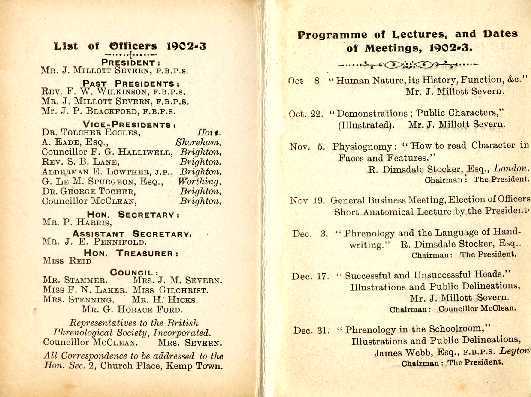Phrenology in England
Although controversial almost from its inception, phrenology prospered through most of the 19th century. But as physicians and surgeons began to learn more about the localization of cerebral function and psychologists gained credibility and developed their own theories of human behavior, and, possibly most important, fads and fashions changed, the movement began to disappear. O. S. Fowler continued to offer phrenological examinations, but left the Fowler and Wells business to concentrate on publishing and a campaign for sex education. Samuel R. Wells died in 1875, following some economic reverses, and the Fowler and Wells publishing house went out of existence in the early 20th century, with the last issue of the Phrenological Journal and Science of Health appearing in 1911. Interest in phrenology persisted, though, and popular works on the subject, such as V. G. Rocine's Heads, Faces, Types, Races (1910), Charles Henry Olin's Phrenology: How to Tell Your Own and Your Friend's Character from the Shape of the Head (1910), and Jean Morris Ellis' Character Analysis: 'Subman or Superman' (1924), continued to appear, but no notable or charismatic figures stepped forward to champion phrenology after the Fowlers and Wells.
In England, later phrenology had a different history. Lorenzo and Lydia Fowler removed to England in 1863 and opened a branch of the Fowler and Wells firm in London. The Fowler Phrenological Institute flourished, offering classes in phrenology, displaying casts and busts, and selling Fowler and Wells publications, and Lorenzo Fowler's daughter, Jessie, produced a number of phrenological texts. The British Phrenological Society, the last organization to form in the movement, was founded by Lorenzo Fowler in 1886. It was concerned with education, treatment of the insane, and the reformation of criminals. The Society had its own journal, The Phrenologist, and was active in publishing and teaching about phrenology. Although World War II appears to have put a halt to its regular sessions, the Society continued to meet and spread phrenological doctrines until its formal dissolution in 1967.

